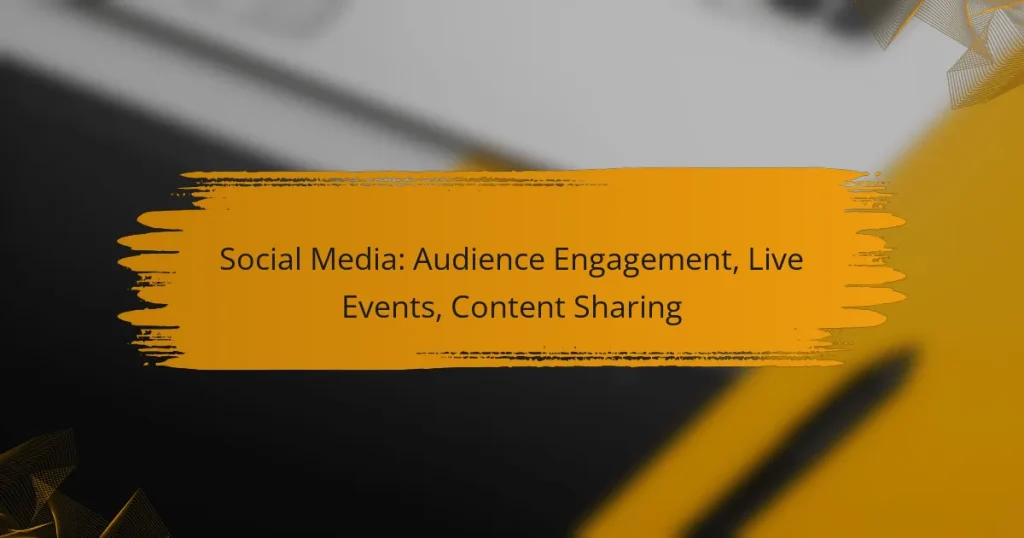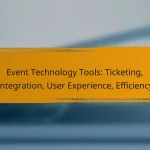Social media has transformed the way brands engage with their audiences, emphasizing the importance of interactive and relatable content. By leveraging effective strategies for live events and optimizing content sharing, businesses can enhance visibility and foster a strong community connection. Understanding audience preferences and promoting real-time interaction are key to maximizing engagement and ensuring successful experiences.
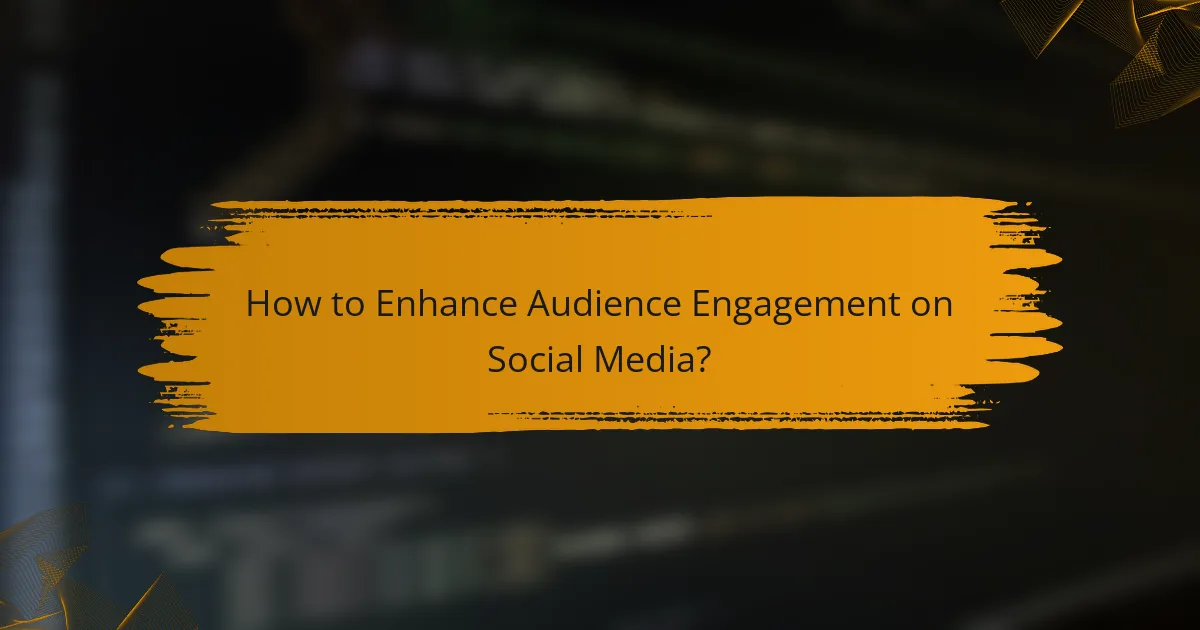
How to Enhance Audience Engagement on Social Media?
Enhancing audience engagement on social media involves creating interactive and relatable content that encourages participation. By focusing on user involvement and fostering community, brands can significantly boost their visibility and connection with followers.
Utilize Interactive Content
Interactive content, such as quizzes, games, and infographics, captures attention and encourages users to engage actively. This type of content not only entertains but also provides valuable insights into audience preferences. For example, a brand could create a fun quiz related to its products, prompting users to share their results and increase reach.
Consider using tools like Canva or Typeform to create visually appealing and easy-to-share interactive elements. Ensure that the content aligns with your brand message to maintain coherence and relevance.
Leverage User-Generated Content
User-generated content (UGC) is an effective way to build community and trust. By encouraging followers to share their experiences with your products, you create authentic content that resonates with potential customers. Brands can run campaigns asking users to post photos or testimonials, often incentivized by contests or features on the brand’s official page.
When sharing UGC, always credit the original creator to foster goodwill and encourage more contributions. This approach not only enhances engagement but also provides social proof that can influence purchasing decisions.
Implement Polls and Surveys
Polls and surveys are straightforward tools for gauging audience opinions and preferences. They invite followers to share their thoughts on various topics, making them feel valued and heard. For instance, a brand might ask followers to vote on new product features or preferences, which can guide future offerings.
Platforms like Instagram and Twitter offer built-in polling features that make it easy to engage your audience. Keep polls concise and relevant to maximize participation, and share the results to show that you value their input.
Host Live Q&A Sessions
Live Q&A sessions provide a platform for real-time interaction between brands and their audience. These sessions allow followers to ask questions directly, fostering a sense of community and transparency. Brands can schedule regular sessions on platforms like Facebook Live or Instagram Live to address common queries or discuss new initiatives.
Promote these events in advance to build anticipation and ensure a larger audience. During the session, encourage viewers to submit questions in the comments to keep the conversation flowing and engaging.
Engage with Comments and Messages
Active engagement with comments and direct messages is crucial for building relationships on social media. Responding promptly to inquiries or feedback shows that you value your audience’s input. Aim to reply to comments within a few hours to maintain a lively conversation and encourage further interaction.
Consider setting aside dedicated time each day to interact with followers, addressing both positive feedback and constructive criticism. This approach not only enhances engagement but also humanizes your brand, making it more relatable and trustworthy.
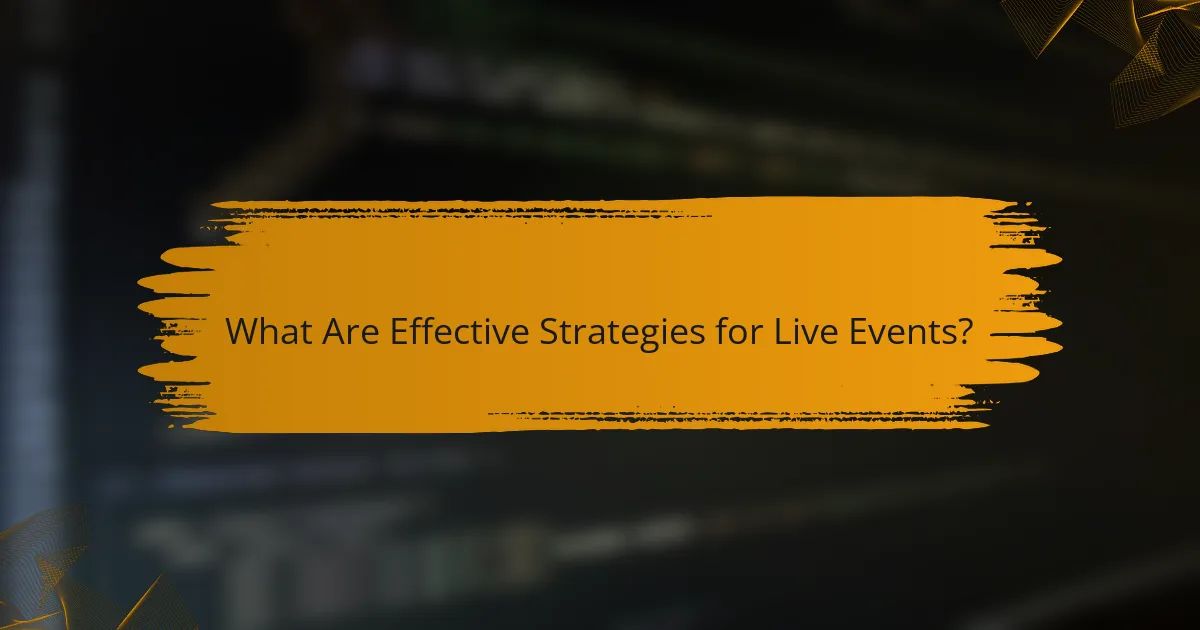
What Are Effective Strategies for Live Events?
Effective strategies for live events include thorough planning, promotion across social media, and fostering real-time interaction. These elements help maximize audience engagement and ensure a successful event experience.
Plan Virtual Events with Platforms like Zoom
Utilizing platforms like Zoom allows for seamless virtual event hosting, accommodating large audiences with interactive features. Consider factors such as participant limits, breakout rooms, and screen sharing capabilities when selecting a platform.
Ensure your technology is reliable by conducting test runs before the event. This helps identify any potential issues with audio, video, or connectivity, allowing for a smoother experience on the day of the event.
Promote Events on Social Media Channels
Promoting your live event on social media channels is crucial for reaching a wider audience. Use platforms like Facebook, Instagram, and Twitter to share event details, engaging visuals, and countdown reminders.
Consider creating event pages or posts that encourage sharing among followers. This can significantly increase visibility and attract participants who may not have been aware of the event otherwise.
Incorporate Real-Time Interaction
Real-time interaction during live events enhances audience engagement and creates a more dynamic atmosphere. Incorporate features such as Q&A sessions, polls, and chat functions to encourage participation.
Encourage attendees to ask questions or share their thoughts throughout the event. This not only keeps the audience engaged but also provides valuable feedback for future events.
Use Hashtags for Event Visibility
Using specific hashtags for your event can significantly enhance its visibility on social media. Create a unique hashtag that reflects the event’s theme and encourage attendees to use it when posting about their experience.
Monitor the hashtag during and after the event to engage with participants and share highlights. This practice can help build a community around your event and increase its reach beyond the initial audience.
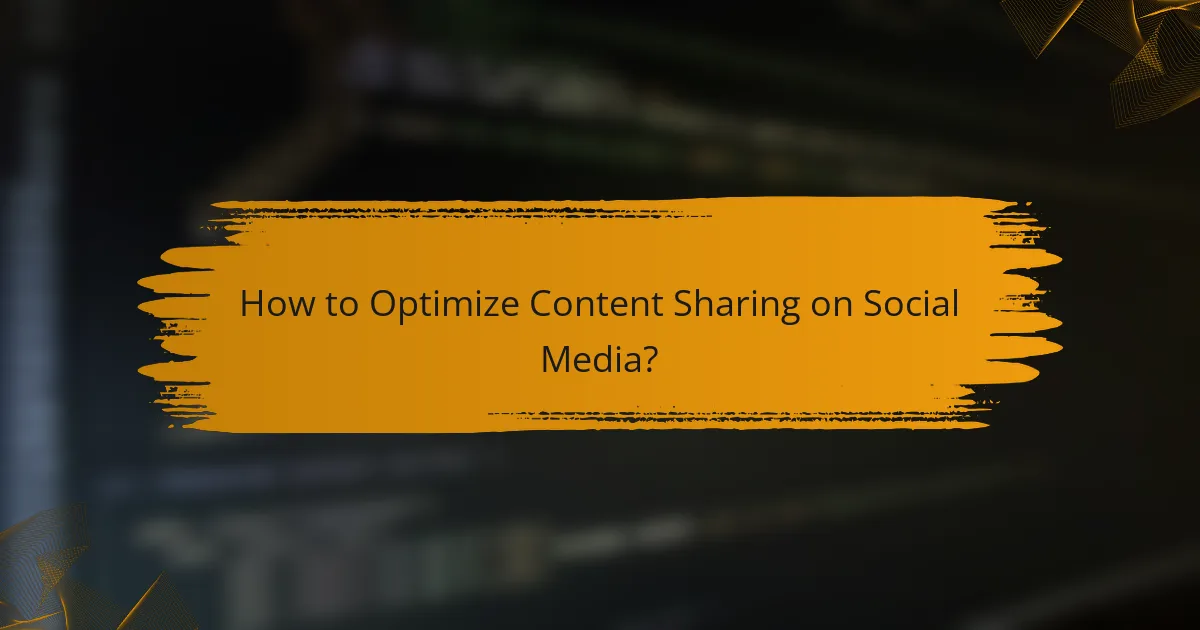
How to Optimize Content Sharing on Social Media?
To optimize content sharing on social media, focus on understanding your audience and tailoring your approach to their preferences. Effective strategies include selecting the right platforms, using engaging visuals, scheduling posts wisely, and providing incentives for sharing.
Choose the Right Platforms for Your Audience
Selecting the appropriate social media platforms is crucial for effective content sharing. Research where your target audience spends their time, whether it’s Facebook, Instagram, Twitter, or LinkedIn. Each platform has unique demographics and user behaviors that can influence engagement levels.
For instance, younger audiences may prefer TikTok or Instagram, while professionals might gravitate towards LinkedIn. Consider creating platform-specific content to maximize reach and relevance.
Use Eye-Catching Visuals
Visual content significantly enhances engagement on social media. Use high-quality images, infographics, and videos to capture attention and convey your message effectively. Posts with visuals tend to receive higher interaction rates compared to text-only posts.
Incorporate brand colors and styles to maintain consistency and recognition. Tools like Canva or Adobe Spark can help create visually appealing graphics that resonate with your audience.
Schedule Posts for Maximum Reach
Timing your posts can greatly affect their visibility and engagement. Analyze when your audience is most active on each platform and schedule your content accordingly. Generally, weekdays during lunch hours or early evenings are ideal for many users.
Utilize scheduling tools like Buffer or Hootsuite to automate posting and ensure consistent engagement. Regularly review analytics to adjust your timing based on performance trends.
Encourage Sharing with Incentives
Offering incentives can motivate your audience to share your content. Consider running contests, giveaways, or exclusive promotions that require sharing your posts to enter. This not only increases visibility but also fosters community engagement.
Make sure the incentives are relevant to your audience to enhance participation. For example, if you’re a beauty brand, offering a free product sample can encourage sharing among beauty enthusiasts.
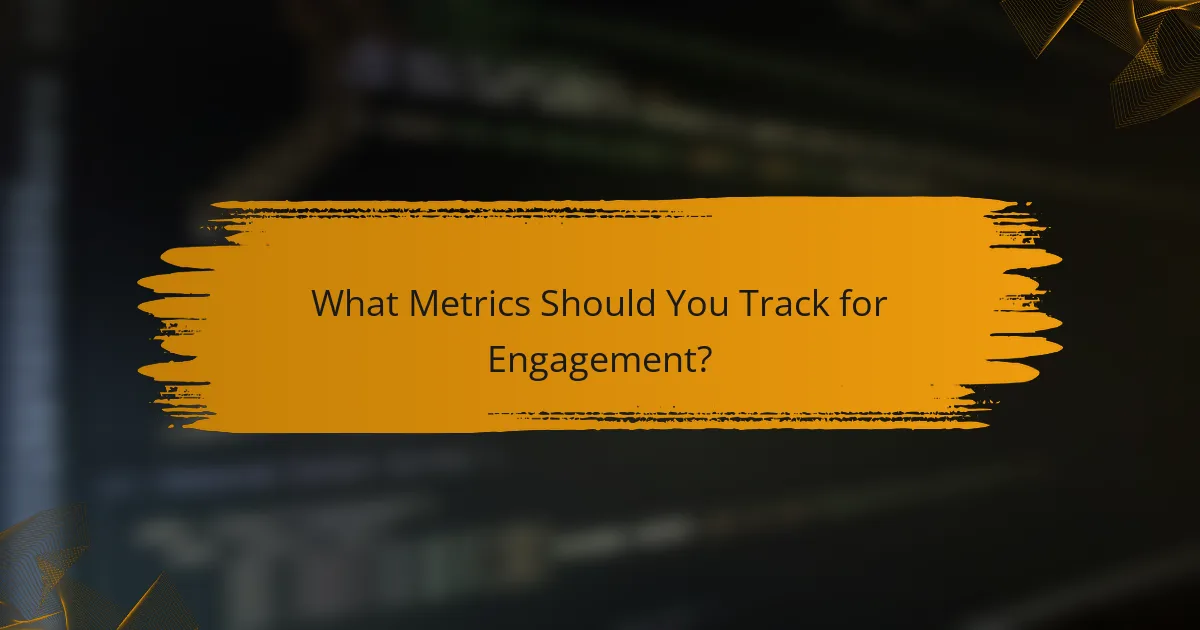
What Metrics Should You Track for Engagement?
To effectively gauge audience engagement on social media, focus on key metrics such as engagement rates, reach, impressions, and click-through rates. These metrics provide insight into how well your content resonates with your audience and can guide your strategy for improvement.
Monitor Engagement Rates
Engagement rates reflect the level of interaction your audience has with your content, typically measured through likes, comments, shares, and saves. A good engagement rate can vary by platform but generally falls between 1% to 5% for most social media channels.
To monitor engagement rates, calculate the total interactions divided by the total followers or impressions, then multiply by 100 to get a percentage. Regularly tracking this metric helps identify which types of content perform best and encourages adjustments to your strategy.
Analyze Reach and Impressions
Reach indicates the total number of unique users who see your content, while impressions measure how many times your content is displayed, regardless of whether it was clicked. Understanding both metrics is crucial for assessing the visibility of your posts.
To analyze these metrics, use the analytics tools provided by social media platforms. Aim for a high reach with consistent impressions, as this indicates that your content is not only being seen but is also being shared or engaged with by users.
Track Click-Through Rates
Click-through rates (CTR) measure the percentage of users who click on a link within your content compared to the total number of users who viewed it. A higher CTR suggests that your content is compelling and encourages users to take action.
To calculate CTR, divide the number of clicks by the number of impressions, then multiply by 100. A good CTR can vary widely by industry but generally ranges from 2% to 5%. Regularly tracking this metric can help refine your calls to action and improve overall content effectiveness.
